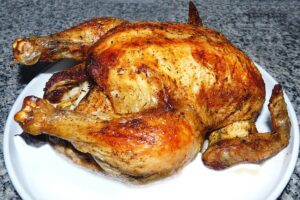Introduction
Hitting protein goals is essential for maintaining a healthy diet and supporting various bodily functions. Whether you are an athlete, a fitness enthusiast, or simply looking to improve your overall health, meeting your protein requirements is crucial. In this article, we will explore effective strategies to help you reach your protein goals and optimize your nutrition.
Understanding Protein Requirements
Before diving into strategies, it is important to understand how much protein your body needs. Protein requirements vary depending on factors such as age, sex, weight, and activity level. The Recommended Dietary Allowance (RDA) for protein is 0.8 grams per kilogram of body weight for sedentary adults. However, athletes and individuals engaged in intense physical activity may require higher protein intake.
Calculate Your Protein Needs
To determine your protein needs, multiply your weight in kilograms by the appropriate protein factor. For sedentary individuals, use a factor of 0.8 grams per kilogram. For active individuals, the factor can range from 1.2 to 2.0 grams per kilogram, depending on the intensity and duration of your workouts.
For example, a sedentary individual weighing 70 kilograms would require approximately 56 grams of protein per day (70 kg x 0.8 g/kg). On the other hand, an active individual weighing the same amount may need anywhere between 84 grams to 140 grams of protein per day (70 kg x 1.2 g/kg to 70 kg x 2.0 g/kg).
Include Protein-Rich Foods
One of the most effective ways to hit your protein goals is to incorporate protein-rich foods into your diet. Foods such as lean meats, poultry, fish, eggs, dairy products, legumes, nuts, and seeds are excellent sources of protein. Aim to include a variety of these foods in your meals to ensure you are getting a wide range of essential amino acids.
Plan Your Meals and Snacks
Planning your meals and snacks in advance can help you stay on track with your protein goals. Include protein-rich foods in each meal and snack to distribute your protein intake throughout the day. This can help optimize muscle protein synthesis and support muscle recovery and growth.
Consider meal prepping to make it easier to consume protein-rich meals, especially when you have a busy schedule. Prepare meals in advance and store them in portioned containers, ensuring they contain an adequate amount of protein.
Supplement with Protein Powders
Protein powders can be a convenient way to supplement your protein intake, especially for individuals with higher protein requirements or those who struggle to meet their goals through whole foods alone. There are various types of protein powders available, such as whey, casein, soy, and plant-based options like pea or rice protein.
When choosing a protein powder, consider factors such as your dietary restrictions, taste preferences, and any potential allergies. It’s also important to select a reputable brand that undergoes third-party testing to ensure product quality and purity.
Track Your Protein Intake
Keeping track of your protein intake can help you monitor your progress and ensure you are meeting your goals. There are several mobile apps and websites available that allow you to log your meals and track your macronutrient intake, including protein. By tracking your intake, you can make adjustments as needed to ensure you are hitting your protein goals consistently.
Conclusion
Meeting your protein goals is crucial for overall health and optimal performance. By calculating your protein needs, including protein-rich foods in your diet, planning your meals and snacks, considering protein supplements, and tracking your intake, you can effectively hit your protein goals and support your body’s needs.
References
– Mayo Clinic: mayoclinic.org
– National Institutes of Health: nih.gov
– Academy of Nutrition and Dietetics: eatright.org













